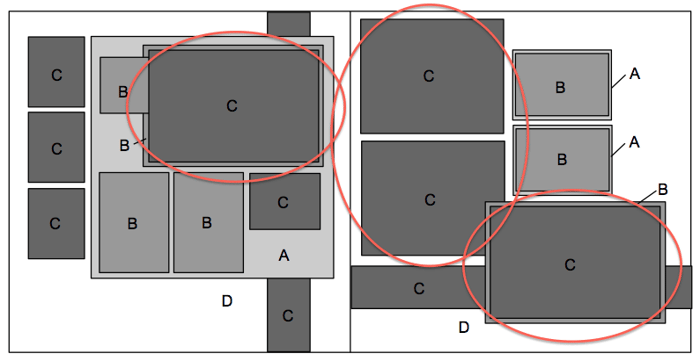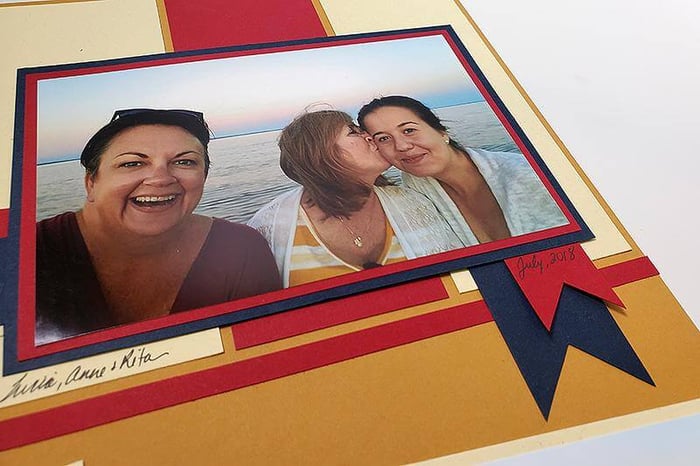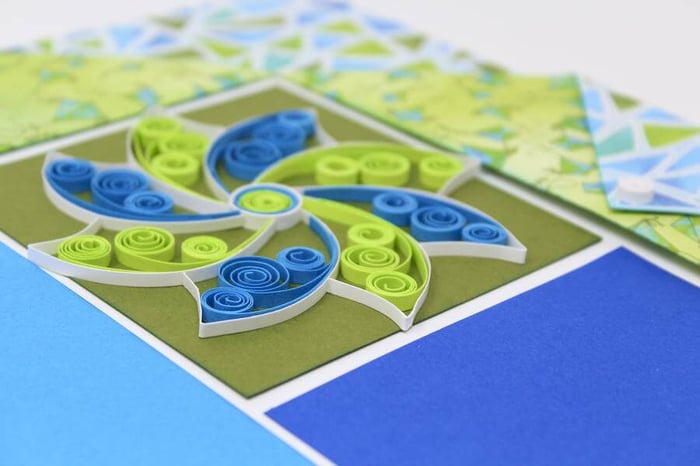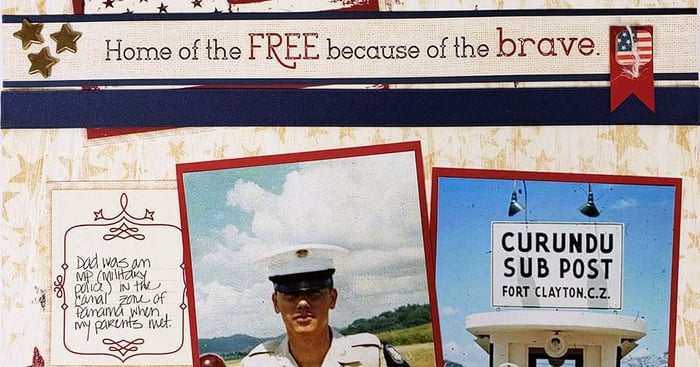Tricia's original article published in 2014 contains valuable information that still holds true today. These six tips for layout design are worth sharing again. As a bonus, Julie and I each created a new layout using these same principles to inspire you.
Six Tips for Layout Design by Tricia Morris
Have you ever had the sense that your finished layouts felt a little "off"?
To ensure success, stick with the following six principles when creating with our monthly layout cards and pre-assembled page designs.
1. Focal Images
Think of your page as a theater production. Select the best photos to be the "leading characters." Feature those images on the full 4x6 single or double mats. In the July 2014 Layout Formula, there are two double-mats for focal images and two additional co-stars with single mats.

2. Groups
Compliment focal images with groups of smaller items. These are the "supporting characters" of your theater production. This sketch has several sets of sub groups. The smaller spots can also be an ideal location for journaling or non-photo embellishments.

3. Anchoring Strips
This is the "backstage crew" of your production! Anchor elements on the layout with 12" strips to prevent that uncomfortable "floating" feeling. Anchors vary in width and are created with strips of paper, ribbons or even a row of stamped images. I like to alternate with horizontal and vertical anchoring strips.
 4. Anchoring Blocks
4. Anchoring Blocks
In addition to strips, another helpful grounding tool is a block of solid or printed paper beneath a group of items. I frequently use complete sheets of 8.5x11" paper as an anchoring block. It also subdivides the page into smaller areas and can make the space seem less overwhelming.
5. Spacing
I like to separate elements on the page with equal spacing within groups. Notice how all of the elements on the double page spread have a perimeter of roughly the same distance. This helps create a cohesive feeling within the group. Try to avoid placing pieces at the top, bottom and outside edges.

Note the difference in the example below with the lack of anchoring, grouping, and spacing principles.

6. Tangents
A tangent simply indicates that two things are touching - and not in a good way. Avoid a tangent created by two corners/edges touching or aligning with one another. The first illustration below shows ideal placement of corners.

Study the differences in the layout below to observe the newly-formed tangents. Aligning the vertical anchoring strip with the edge of the anchor block causes the photo mat in the lower right corner to form a tangent with the right edge of the page. The other newly-formed corner tangents are not as problematic, but you can see the arrangement above makes for a much better layout.

Oopsie Daisy Page Formula
Here is Tricia's real-life layout using July's Oopsie Daisy Page Formula with papers from the (now-extinct) collection:

Adapting the layout sketch is easy once you know the basic principles. Preserve the tall water tower image by adding it to the grouping on the bottom half of the left page. The anchoring strip was also a terrific place for a page title.
Want to give it a try? Download a complimentary copy of the July 2014 Page Formula for yourself.
Karen: Turquoise Layout
Gather two Turquoise 12x12 Border prints for the base of the layout and one 12x12 Gold Plain (Papers C and D). Trim one each of the Red Plain and Stone Print to 8.5x11 before following the cutting instructions for Paper A and B.
As you can see, I changed the orientation of the border strips in order to highlight the gorgeous artwork.
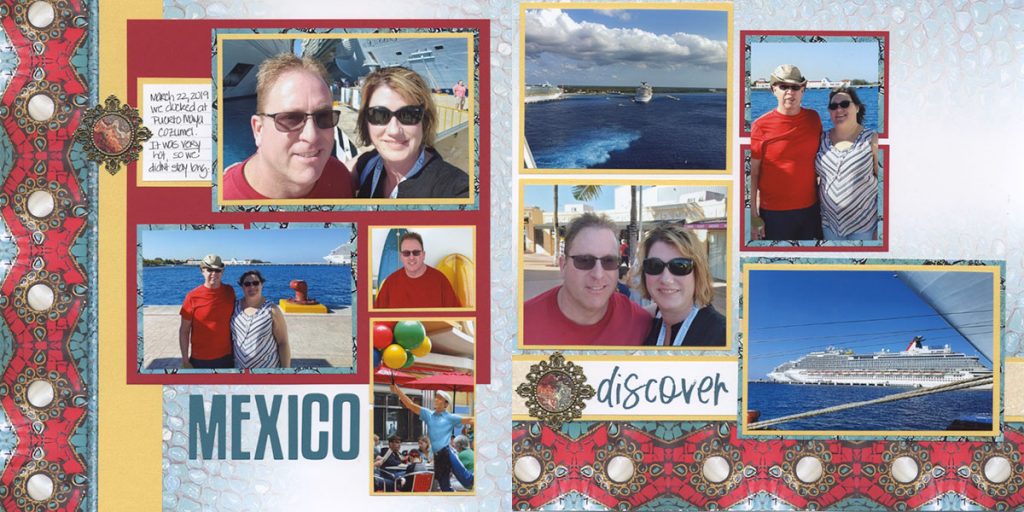
In lieu of cropped photos on the smallest mats, trim slightly larger photos to fit across two mats.

Flip the 2x2.25" Stone Print to the plain side and nest onto one of the 2x2.5" Gold mats. Tuck the "offset" edge underneath the double matted photo. Add journaling.

Julie: Western Layout
Gather two Western 12x12 Gold Plains for the base of the layout and one 12x12 Paisley Print. (Papers C and D). Trim one each of the Blue and Ivory Plains to 8.5x11 before following the cutting instructions for Paper A and B.
I kept the sketch orientation the same, but added two blue ribbons to accent the Print border strips on each page.

Like Karen, I cropped the both the Nauset Lighthouse and ocean waves photos so they spanned two of the smaller mats. The stamped sentiment fit perfectly onto the small ivory panel. Accent the stamped panel with a filigree flower from the Card Kit using Bookbinding Glue dispensed from a Needle-tipped Applicator. The pearls are from my stash.

Members, don't forget to consult your exclusive monthly member email to download your Bonus Page Formula. You'll enjoy instant inspiration and complete paper trimming instructions every month!
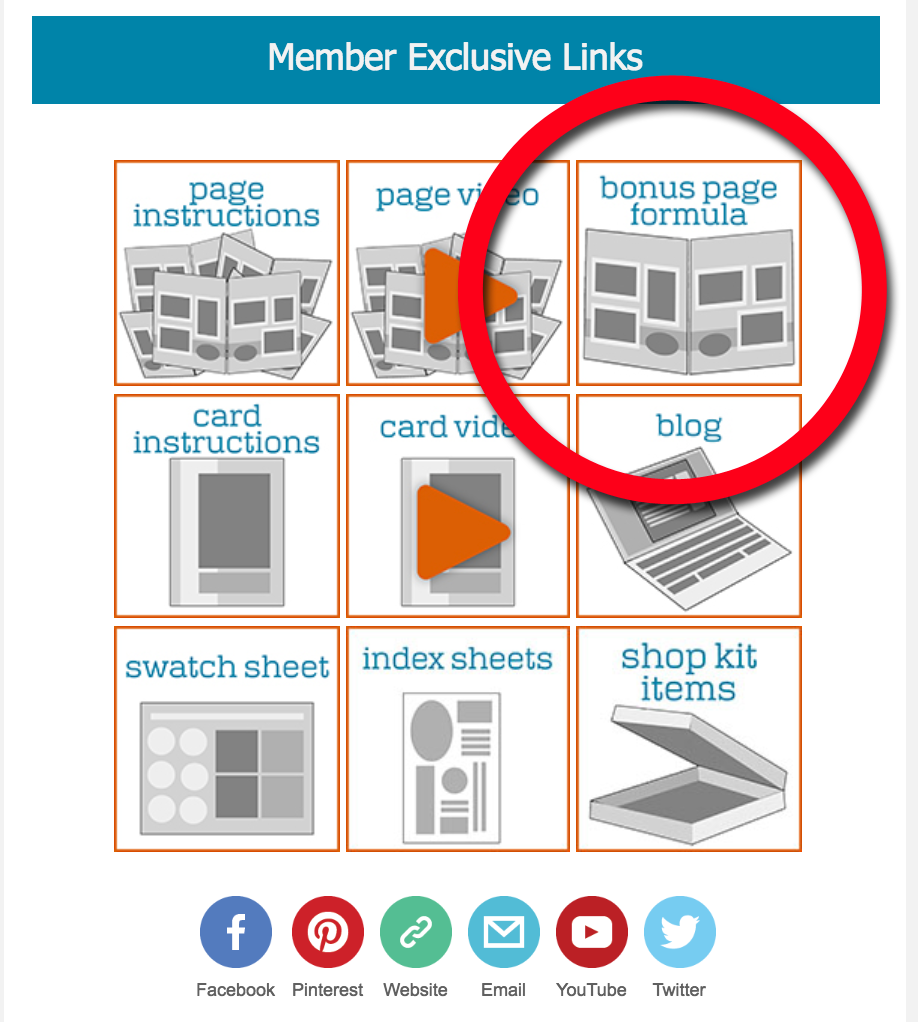
Non-members and those looking for even more page formulas can browse the selection on our hybrid store. Happy scrapping!
Karen and Julie
